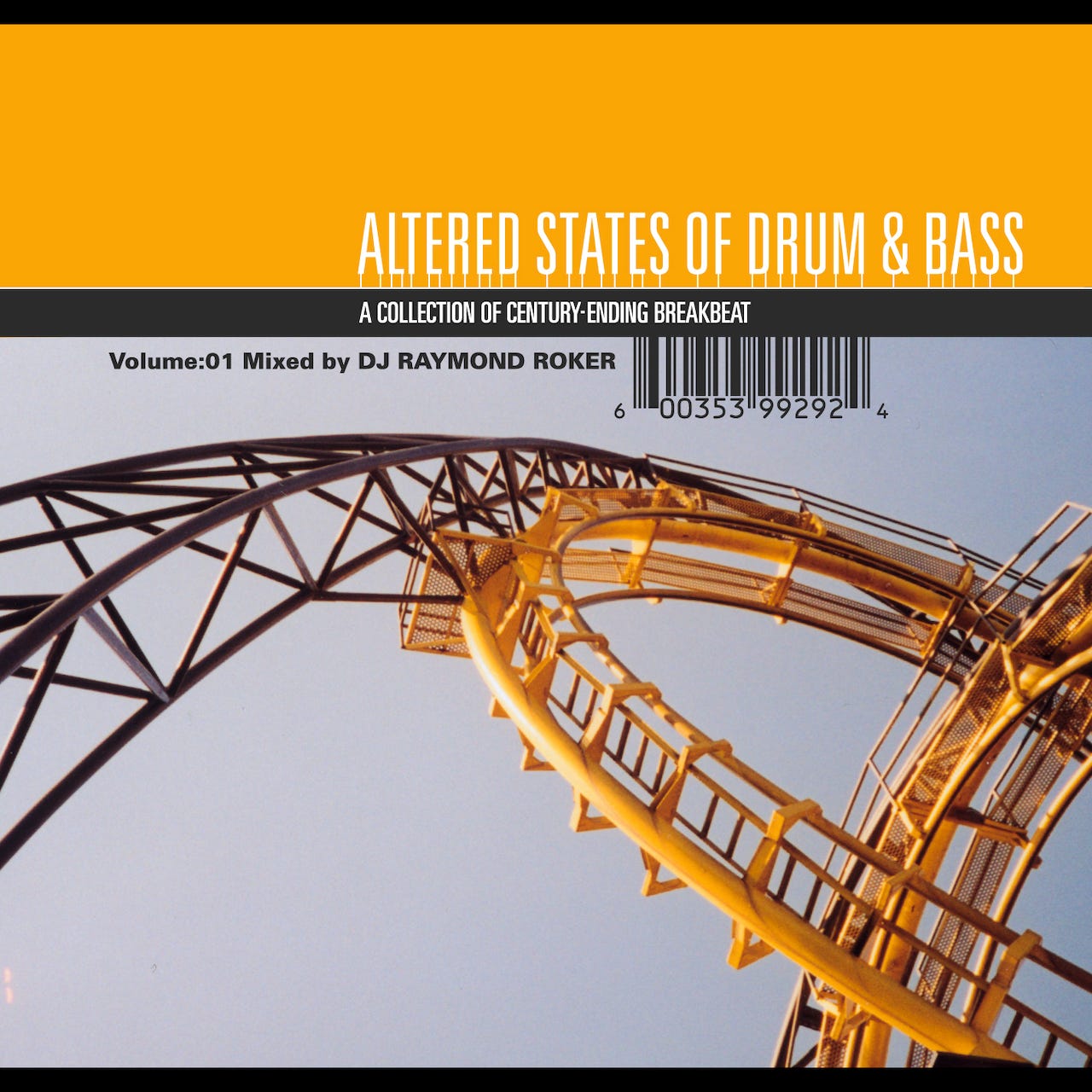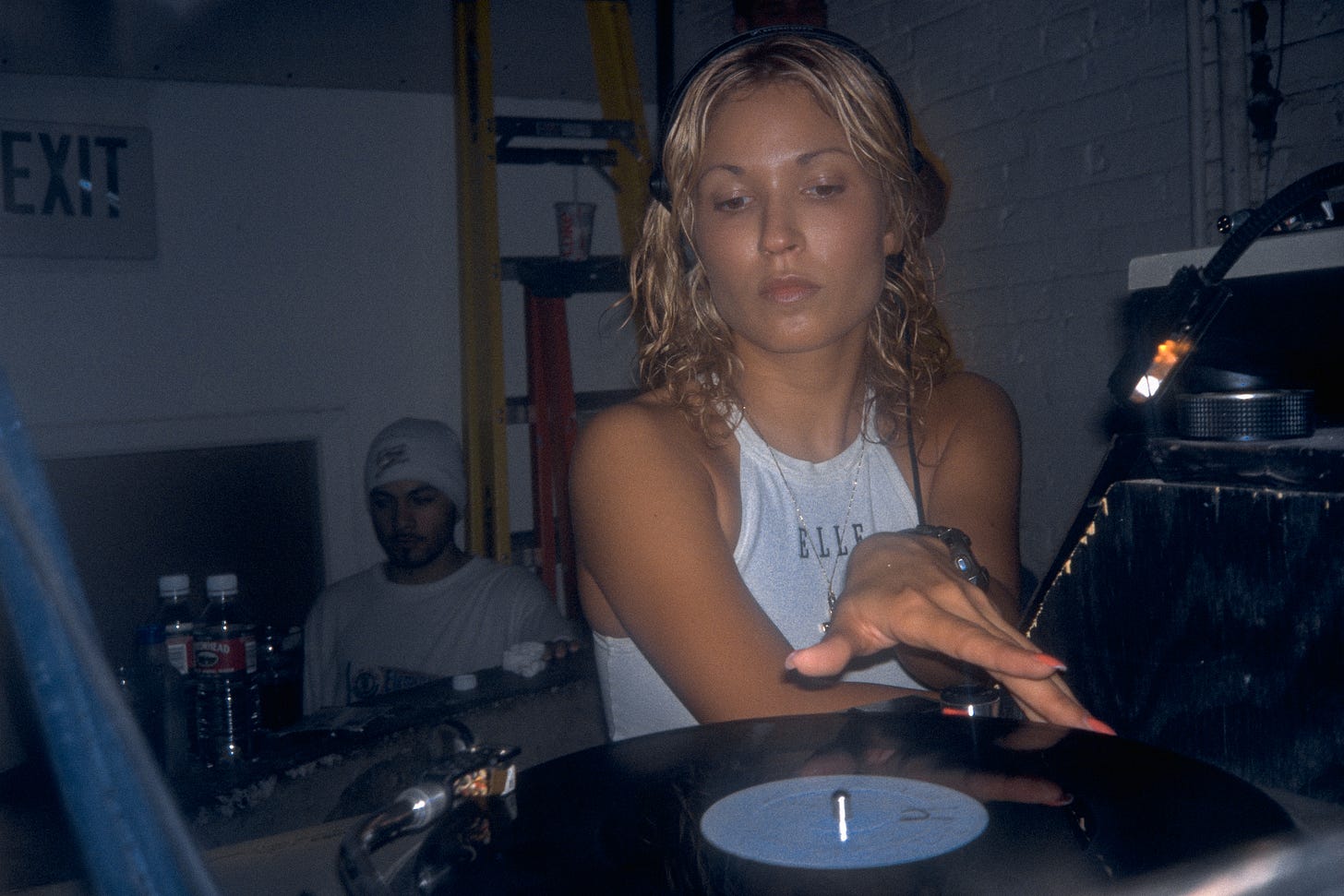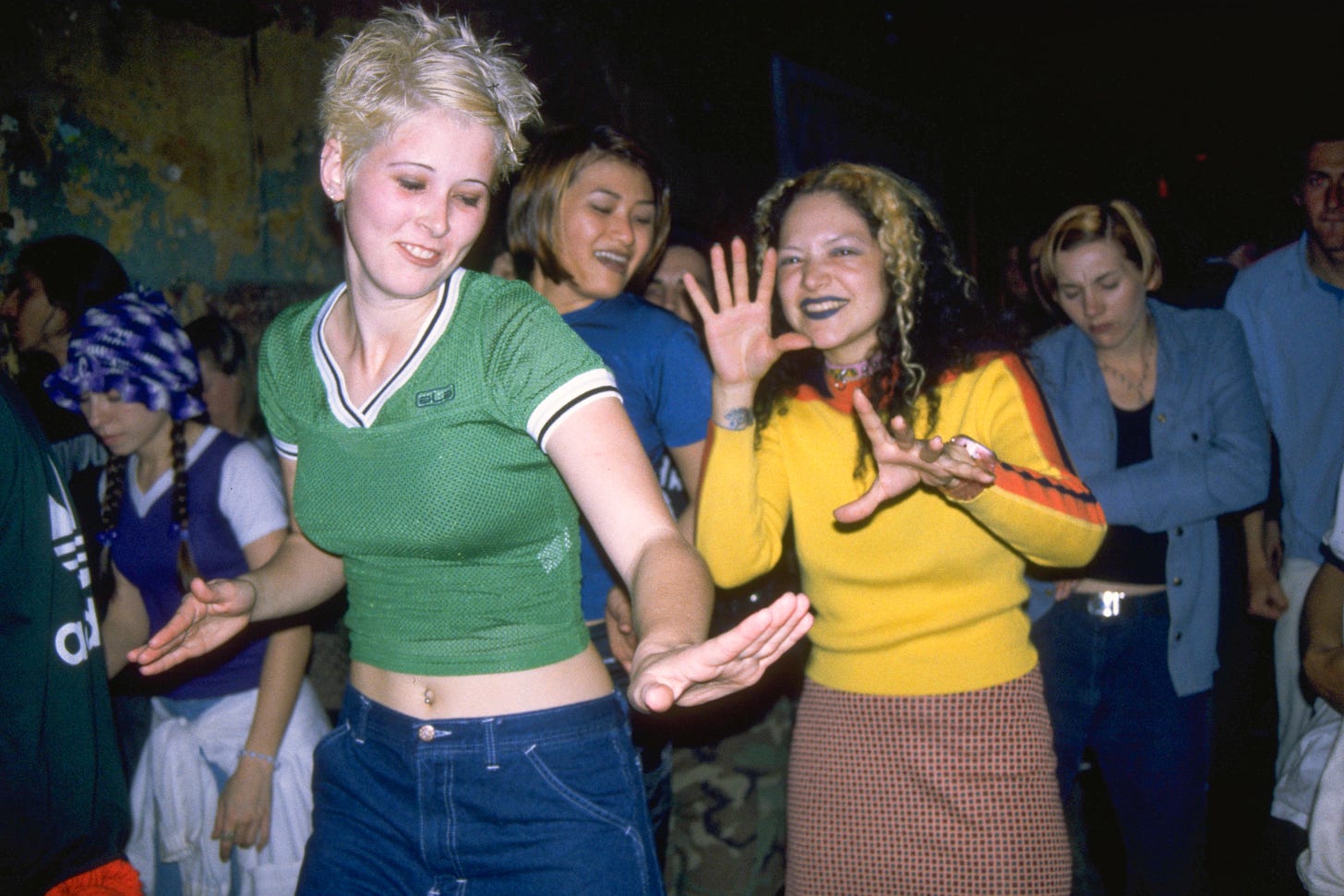Heavy Metal Soul: A Drum & Bass Love Letter
Twenty-four years ago, I released a mixtape homage to jungle music
Note: I use the term “jungle” and “drum & bass” interchangeably throughout this piece. Simply put, the music is both jungle and drum & bass.
In 1999, I received an invitation from Chris Smith, the founder of Om Records. He wanted a mix for their new drum & bass DJ series and thought I should do it. Om was already a longtime advertiser in URB, so this wasn’t completely out of left field. Plus, I had a favorable reputation in the jungle/drum n bass scene due to our weekly Sunday club Science (launched in 1997) and the magazine’s ongoing coverage of the movement through the decade. As a DJ, I appeared frequently at events, including Electric Daisy Carnival, Audiotistic, and Zen Festival. And in October ’99, I would bring our Science trio (me, DJ Jun, and MC Questionmark) to the first run of a new festival called Coachella.
Also, in the Fall of that year, as the millennium approached, Om would release my first official mix CD, Altered States of Drum & Bass: A Collection of Century-Ending Breakbeat. After a decade of spinning and making mixtapes, I’d now be on retail shelves nationwide. And on the one-hour and five-minute disc were 14 tracks pulled directly from my record case, on vinyl, and fresh from the club. This was my chance to create a time capsule of the sound I had been actively promoting, spinning, and writing about for years. Even the cover design was an opportunity to work with the brilliant team at Airline Industries, whose work was in a league of its own.
Re-reading my liner notes and reviews of the compilation, it lives up to the “heavy metal soul” description I gave the jungle/drum & bass sound in a 1995 issue of URB. Surely influenced by our then-cover star and Metalheadz honcho Goldie, whose sound embodied the music’s dark and light extremes, the words signaled a deeper calling for drum & bass.
As much a reflection of the late 90s sonics of the genre, the sound was, as reviews would say, “brutal” and sometimes “nihilistic” but also full of lush rhythmic grooves. It was not mindless or even repetitive in my mind; the chord and drum progressions were clear to the trained ear. As with Science, our weekly gathering for diehard fans, we made no apologies for the tough sound, nor was I looking to deliver a gateway mix for newbies. This was as upfront, uncompromising, and true a reflection of the moment.
Science was our dark Sunday night music den, at the Pink, in Santa Monica, and Altered States of Drum & Bass sounds like an hour inside, boxed in by head-nodding junglists. All it’s missing is an MC and the spinning squeal of a DJ’s rewind when the drop is so intense as to demand it. The mix reflects the array of UK and US production talents as the American scene finally gained respect by the decade’s end. I mixed it live on two turntables on the 10th floor of our offices in the Taft Building at Hollywood and Vine. I wasn’t proficient enough for — nor interested in — fancy edits or tricks, so it’s a straightforward blend with the layering and intensity I was known for.
"Altered States [of Drum & Bass]" is more than just regressively brutal, though — it's the sound of artists pushing the very limits of what music is — Salon.com
Almost 25 years later, I’d still play most of these records if given a chance. Drum & bass, the result of forward-leaning sonic design and rooted in a well-worn dub reggae toasting tradition poured over breakbeats, was always firmly in the present and decades in the future at the same time. Jungle legends like Doc Scott heavily influenced the style of this mix (his sinister burner “Swarm” is an all-time favorite). As did tech house giant Junior Vasquez, whose early-90s Sound Factory cross fades lasted an eternity, simultaneously creating a multidimensional, enveloping soundscape of 2-3 songs. One Altered States reviewer called the results “bleak and claustrophobic,” a description I proudly embrace. The CD’s liner notes (remember those?) from 1999 sum up my intent nicely:
This, the first chapter in Om's Altered States of Drum & Bass, is the Science soundtrack through my mind. Culling recent releases from the cream of jungle labels worldwide, this unedited mix runs the gamut of jungle’s sonic moods. The violent ride of Embee's “Secrets” and the ultra dark purge of Source Directs “Mind Weaver” sit in strange proxirnity to the soulful strut of Hell’s Kitchen's Ming & FS' “Tantra" remix and Pish Posh’s (aka DJ Wally) stab at “Reflection Eternal,” an underground hip-hop favorite. San Francisco’s prolific DJ Abstract's “Aura 1” dissolves into the aggressive charge of Bad Company’s floorburner “Nine,” only to vaporize under the weight of the mighty Dylan’s “Blackout” remix. UK legends DJ Hype (here as Freestyles) and Dom & Roland fuel the old school revival with “The Attack” and Known Unknown's “Roller’s Edit” respectively. The sideways percussive logic of Jonny L's “Uneasy,” and Breakbeat Era’s (Roni Size, DJ Die, and Leonie Laws) “Rancid” defy genres with ease, while the pan-cultural influence of Makai’s “Behind the Mask” is a euphoric anthem.
My aim was to capture, in a 100% live mix, the emotion and the abrasive, raw energy of a night at the club. It’s a luxurious collage of heavy metal soul; a mix of sexy, lowriding bass and drums of steel. The organic coexists with the stunningly futuristic. Brutal, experimental, sci-fi collages ride tandem soundwaves with hip-hop's remnant genius. This is a place where worlds collide. This is the altered state of Science.
As a result of releasing the CD, and with Om’s PR push, I spent the following couple of years steadily traveling the country playing small and large rooms. I even toured with Paul Oakenfold, where I’d flip the script and introduce drum n bass to his trance fans. It was fun hitting cities where crowds weren’t used to having an international superstar visit. It was new to Oakenfold too. At one point, sitting at LAX, he innocently asked me about Southwest Airlines’ open seating policy saying, “So, it’s like a bus?” Yep, exactly.
As any keen observer of this genre can affirm, the drum & bass scene continues to thrive, with numerous influential artists actively shaping the global landscape. If there are any lingering doubts regarding the music’s enduring strength, a glance at LA’s Respect, now celebrating its remarkable 24th year, should dispel them. For avid collectors, physical copies of Altered States... can still be found on platforms like Amazon and eBay, alongside a YouTube version. As for my ode to drum & bass, I truly hope it will stand the test of time for at least another 25 years.
As always, your feedback helps me improve this project. I’m also compiling drum & bass classics playlists on Spotify and YouTube, so let me know what I should add. And please stay subscribed for more DJ mixes, photos, and notes from the archive.
UPDATE: Dropped the full mix on Substack as well.
Track List:
Tantra: Ming & FS Mix - Om Zone
Fortified Live Remix - Pish Posh
Rancid Remix - Breakbeat Era
Uneasy - Jonny L
Mind Weaver - Source Direct
The Attack - Freestyles
Secrets - Embee
Airships - Psion
Terminal 1 - Ram Trilogy
Aura 1 - DJ Abstract
Nine - Bad Company
Blackout Remix - Dylan
Rollers Edit - Known Unknown
Beneath The Mask - Makai
1999 Review of Altered States of Drum & Bass in Salon.com
Sharps & flats
DJ Raymond Roker's bleak and claustrophobic "Altered States of Drum & Bass" crushes the warm beats of hip-hop and strangles the gasping voice of house.
By Michelle Goldberg
As a genre, drum 'n' bass is forever drawn to the dark side. From time to time, a softer, jazzier, more lush mutation will emerge — LTJ Bukem's soaring ambient jungle, Everything But the Girl's sparkling breakbeat indie pop or Talvin Singh's swirling bhangra collages. Inevitably, though, scene purists react with a sound that escalates the music's original harshness and paranoia.
That's the case with many of the tracks on Raymond Roker's OM compilation "Altered States of Drum & Bass." Billed as "a collection of century-ending breakbeat," the album has a feeling of end-of-time entropy about it — not because the music isn't innovative, but because it's so bleak and claustrophobic that it borders on nihilism. The warm rhythms of hip-hop have been sped up to a punishing martial stomp and the diva vocals of house are reduced to a few gasping words. Both the titles and the samples suggest war — included are Freestyle's "The Attack," Breakbeat Era's "Rancid" and Psion's "Airships." The alternating breaks on "The Attack" sound like enemy crafts trading fire; a sneering voice gives battle advice underneath.
"Altered States" is more than just regressively brutal, though — it's the sound of artists pushing the very limits of what music is. Roker, the founder of electronic music magazine Urb, is the ideal guide through this sinister sonic future. He's chosen experiments in polyrhythm that usually go far beyond the squelching assault of techstep, the furious, relentless, but often one-dimensional subgenre pioneered by Ed Rush. Among the best are DJ Abstract's "Aura 1," in which an eerily descending, distorted drum loop cycles madly over a heart attack of racing snares. Eventually, a pretty synthesizer melody creeps into the mix like a kitten in a war zone, giving the whole thing an odd poignancy.
As "Aura 1" suggests, this music works best when there's a hint of light to contrast with the mechanized gloom. Such elements can be as tiny as the female voice whispering in "Uneasy," the haunting, barely-there jazz strains rippling through Ram Trilogy's "Terminal 1" or the plaintive piano that opens Known Unknown's "Rollers Edit." These brief snatches of beauty break up all the apocalyptic clatter and keep it from becoming monotonous.
The best song on "Altered States" is also the most richly human -- the remix of "Rancid" from Breakbeat Era's brilliant upcoming album, "Ultra Obscene." Featuring the legendary Roni Size, DJ Die and scary chanteuse Lennie Laws, Breakbeat Era makes vocal-driven jungle with singing that mirrors the genre's beats and anxiety. Laws' voice is raw and coiled, with a de-centered, stop-start phrasing to match the uneven, pulsing percussion. Given the fact that electronic music has generally set itself against rock's fetishism of the lead singer, Laws' prominence may seem like a step backward. It doesn't sound that way, though -- her articulation of dread and disquiet makes the music more genuinely frightening. Like all genres rooted in things diabolical, hardcore jungle with its dystopian effects can only go so far before it becomes self-parody. "Altered States" doesn't cross that line, but it goes about as far as it can without becoming inadvertently comic or unlistenable. "Rancid" suggests a way to intensify the tension in a visceral way -- by putting an isolated, desperate person right in the middle of all this tumultuous, shattering chaos.
salon.com | August 18, 1999
From the 1999 press release bio
Techno, house, and hip-hop all sprouted from inner-city lives; their creators were often black, and their audiences were always mixed. When breakbeat techno reemerged in a big way in 1994 as “drum-and-bass,” hyper-speed hip-hop snares rat-a-tatted above Caribbean bass lines while atmospheric synths soared above as an MC growled, “Yes, yes, this is the new sound —underground,” it didn’t take much more to get Roker back on the turntables. In 1997 [Roker] started the West Coast’s first weekly drum and bass night, Science, at The Pink in Santa Monica, Calif. Science has attracted the genre’s finest talent, from Goldie to A Guy Called Gerald, from Photek to Peshay. Roker refined his DJ sets and developed his own unique style, selecting moody, emotional tech-style jungle with MC Question Mark providing the play-by-play. To build upon this weekly showdown, Raymond Roker will release his first official jungle mix CD, Altered States of Drum & Bass Vol. 1 - Raymond Roker, on Om Records in July of this year. Expect an aural explosion with tracks from DJ Abstract, DJ Hype, Jonny L, Psion of Audio Blueprint, Dom & Roland, Source Direct, Breakbeat Era (Roni Size, DJ Die, and Leonie Laws), and Pish Posh, among others. Roker comments on Altered States, “I have always been attracted to the larger-than-life soundscapes of big metallic beats contrasting with a moody sci-fi swamp of tones and noise. I take records and build a sound that envelops, attacks, and disorients... a mean, sexy groove that jacks you.”















The influence Raymond Roker has had on American Jungle/Drum and Bass is massive. He is a friend and a colleague and an inspiration for his contributions to music culture as a whole. Urb Magazine will forever be considered a benchmark music monthly that shined its lights brightly on underground music, whether it was hip hop, house, techno, trance, or the beloved drum and bass… fun fact, the term Planet of the Drums came from Raymond Roker, who graciously allowed us to use it as our own collective name for a tour concept we had at the turn of the century. Who knew it would have lasted this long and still carry weight. Big up!!!
This CD was such a seminal release in the history of Drum & Bass. I remember being in awe of Makai's sampling of Ghost In The Shell on the final track. Seeing guys like Metrik, Grafix and Netsky play in front of a packed crowd of Junglists at EDC this year reassured me that the genre isn't going anywhere. Although I wonder if the kids who go to events like DNBL understand how far back the lineage goes, I'm inspired when I hear newer artists like Goddard and Maduk continue to push things forward. Junglist Movement. Boh!